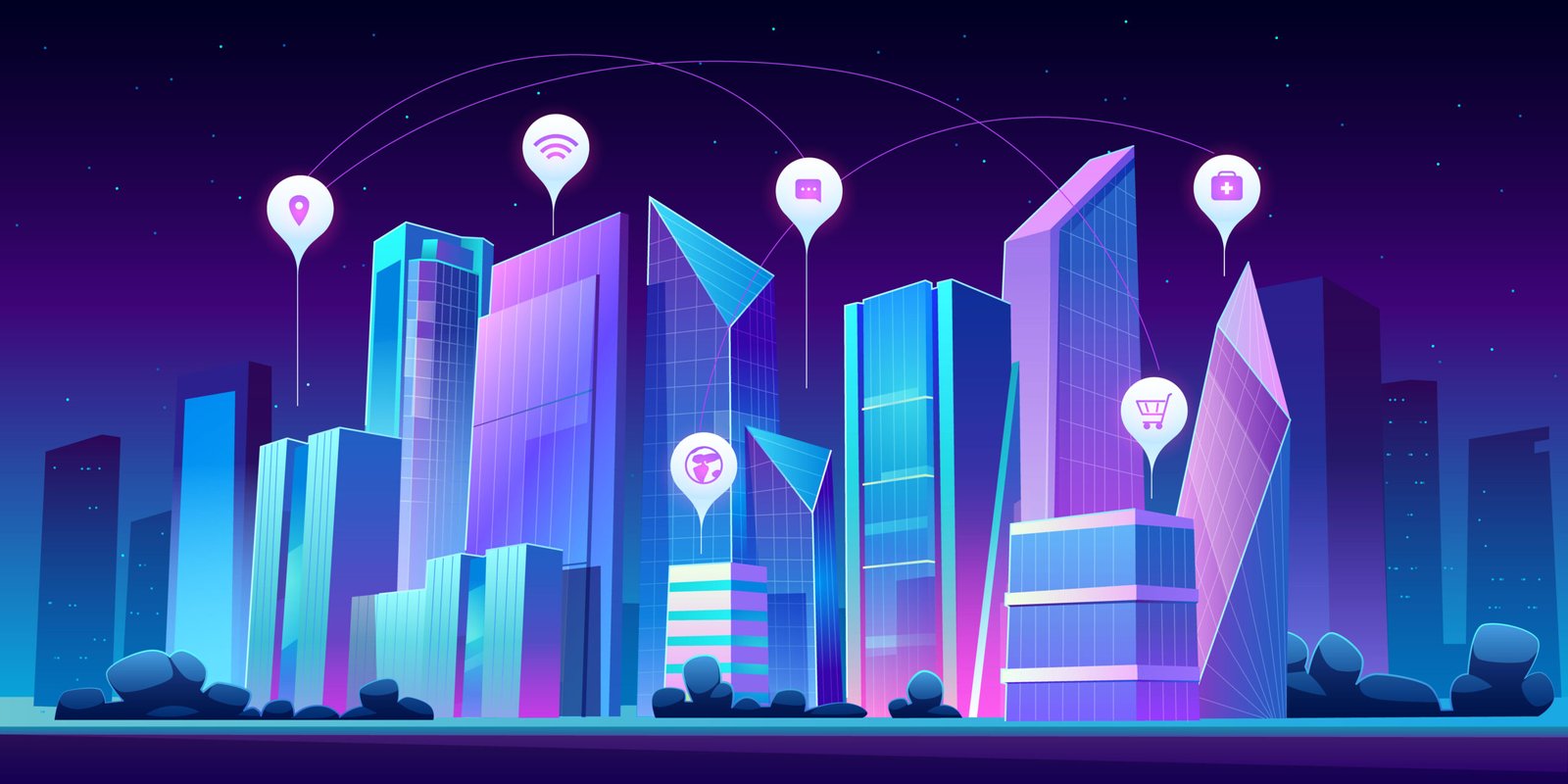The Internet of Things (IoT) has rapidly emerged as a transformative force, weaving its way into our homes, workplaces, and even our cities. It represents a vast network of interconnected devices, each equipped with sensors, software, and processing power, allowing them to communicate and exchange data with each other and with the wider internet. This interconnectedness unlocks a world of possibilities, making our lives easier, more efficient, and even more connected.
Transforming Cities: Smart Solutions for Urban Living

The Internet of Things isn’t just transforming homes and work places, it’s also reshaping the way we live in cities. Imagine a metropolis where:
- Traffic lights automatically adjust to optimize traffic flow, reducing congestion and emissions.
- Waste bins communicate their fullness level to authorities, optimizing collection routes and preventing overflows.
- Streetlights dim in response to pedestrian presence, saving energy and enhancing security.
- Parking spaces communicate their availability in real-time, helping drivers find spots quickly and efficiently.
- Connected sensors monitor air quality and noise pollution, allowing authorities to take proactive measures to improve environmental sustainability.
These are just a few examples of how IoT is transforming cities into smarter, more efficient, and sustainable living spaces. Data-driven decisions, optimized resource management, and real-time responsiveness are revolutionizing the way we experience urban life.
Beyond convenience, smart cities also offer:
- Improved safety and security: Smart cameras and sensors can help deter crime and monitor public spaces, enhancing the safety of citizens.
- Enhanced accessibility: Smart technologies can help individuals with disabilities navigate the city more easily and access services more readily.
- Increased citizen engagement: Interactive platforms can allow citizens to voice their opinions, report issues, and contribute to shaping their city’s development.
The potential of IoT in cities is vast and ever-evolving. As technology continues to advance, we can expect even more innovative solutions to emerge, making our cities smarter, greener, and more livable for everyone.
Smart Living: A Connected Home Ecosystem

Bringing the focus closer to home, IoT devices have seamlessly integrated into our living spaces, ushering in a new era of convenience, efficiency, and sustainability. Imagine having the ability to control and monitor your home environment with just a few taps on your smartphone.
1. Smart Tracker: Keep tabs on your belongings with a Smart Tracker that utilizes IoT technology to provide real-time location information.
2. Smart Refrigerator: A futuristic kitchen companion, the Smart Refrigerator can alert you when groceries are running low and even suggest recipes based on available ingredients.
3. Smart Scale: For health-conscious individuals, a Smart Scale connected to the IoT ecosystem can track and analyze weight, offering insights into fitness progress.
4. Smart Washer: IoT-enabled washing machines offer remote monitoring and control, allowing you to manage laundry cycles efficiently from anywhere.
5. Smart Microwave: Take the guesswork out of cooking with a Smart Microwave that can be controlled and programmed remotely for added convenience.
6. Smart Heating Pressure: Regulate and monitor heating systems with precision using a Smart Heating Pressure device, optimizing energy consumption.
7. Smart Socket: Transform ordinary outlets into intelligent ones with Smart Sockets, enabling remote control and energy monitoring of connected devices.
8. Smart Stove: Enhance kitchen safety and efficiency with a Smart Stove that offers remote control features and real-time monitoring.
Understanding the Backbone: Microcontrollers
But what drives these intelligent devices? At the heart of many IoT applications lies the humble microcontroller. These small, self-contained computers, like the Arduino, pack a punch with their integrated processors, memory, and input/output capabilities. They are designed for specific tasks, making them ideal for embedded systems within various IoT devices.
Arduino: A Beacon of Innovation

Arduino has emerged as a beacon of innovation in the world of microcontrollers. With its user-friendly interface and open-source nature, Arduino allows enthusiasts, hobbyists, and professionals alike to harness the power of microcontrollers for a myriad of applications. Its simplicity, combined with a vibrant community, has democratized the use of microcontrollers and paved the way for IoT projects to flourish.
Exploring Microcomputers: Raspberry Pi’s Versatile Edge

While microcontrollers excel in specific tasks, microcomputers offer a broader range of capabilities. Raspberry Pi, a noteworthy example in the microcomputer category, stands out for its versatility. Equipped with a processor, RAM, and memory, Raspberry Pi finds applications in various fields, from powering small video games to serving as the brain of robotics projects. It represents a different facet of computing, catering to projects with heavier requirements and providing users with a more expansive canvas for innovation.
Arduino vs Raspberry Pi: The Key Differences
While both are powerful tools for building IoT projects, Arduino and Raspberry Pi have some key differences.
| Feature | Arduino | Raspberry Pi |
|---|---|---|
| Type | Microcontroller | Single-board computer |
| Complexity | Simple | More complex |
| Programming Language | C++-based Arduino IDE | Various languages, including Python |
| Cost | Relatively inexpensive | More expensive |
| Applications | Simple tasks like controlling LEDs and motors | Complex tasks like running applications and web servers |
Beyond Convenience: The Potential of IoT
The potential of IoT extends far beyond the realm of personal convenience. It holds the promise to revolutionize various industries and services. Imagine cities that automatically adjust traffic flow based on real-time congestion data, or hospitals that monitor patients’ vital signs remotely, enabling faster and more informed medical decisions.
The possibilities are truly endless. As IoT technology continues to evolve, we can expect even deeper integration into our lives, blurring the lines between the physical and digital worlds. From smart cities to intelligent healthcare, the future of IoT is bright and holds immense potential for positive change.
Conclusion
The Internet of Things is more than just a technological buzzword; it’s a paradigm shift. It’s about harnessing the power of interconnected devices to create a smarter, more efficient, and more connected world. From agriculture to healthcare, from homes to cities, IoT is transforming the way we live, work, and interact with the world around us. As we move forward, it is crucial to embrace the potential of IoT while also addressing concerns related to privacy, security, and data ownership. Together, we can ensure that this powerful technology serves as a force for good, shaping a future that benefits all.

